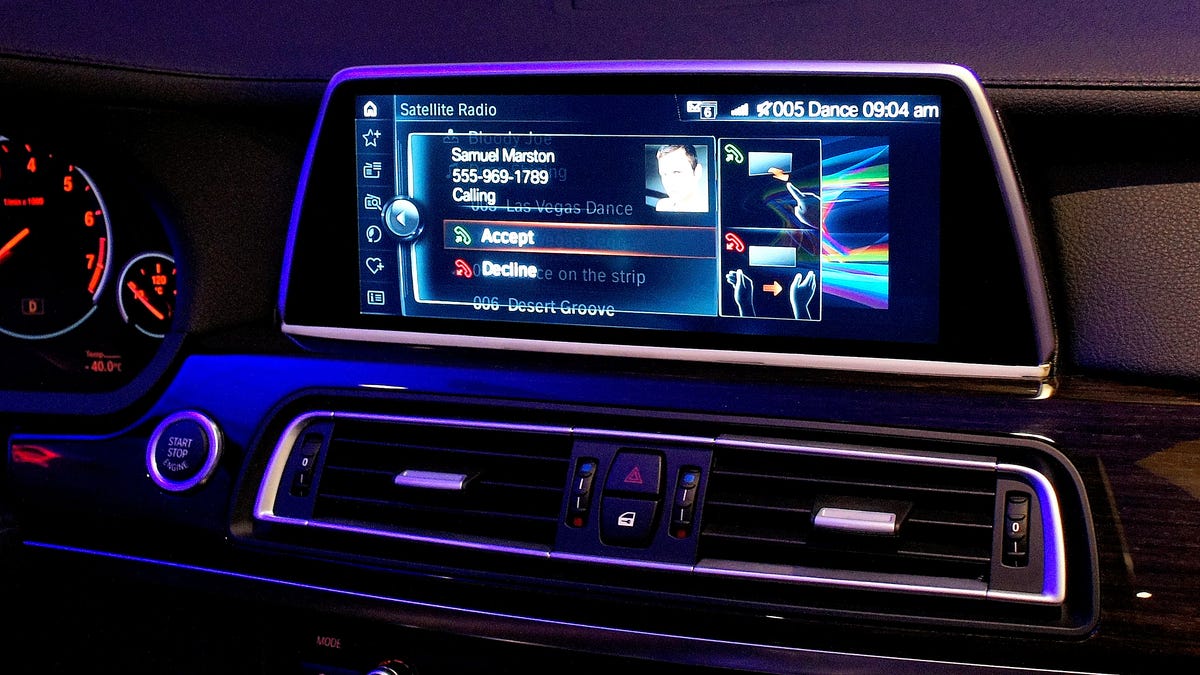BMW finally embraces touchscreens, adds gesture control
The next generation of BMW's iDrive infotainment control system may very well use a touchscreen, and let drivers accept phone calls and adjust volume with gestures.

LAS VEGAS -- Luxury German automakers Audi, BMW and Mercedes-Benz have favored indirect control interfaces rather than touchscreens for their in-car infotainment systems. At CES 2015, BMW showed it was ready to break from the pack with a touchscreen and gesture control for its iDrive infotainment interface, a system it calls BMW Gesture Recognition.
Current BMW models use iDrive, consisting of a control dial and buttons on the console and LCD on the dashboard, for navigation, apps, hands-free phone and stereo features. The new concept for iDrive adds touchscreen capability to the LCD and a camera to recognize control gestures from the driver.
During a demonstration, Dr. Verena Reischl of BMW showed how the system allowed gesture control for specific tasks. When a phone call came in, she merely pointed at the "answer" icon on the screen to accept the call. To decline an incoming call, she brushed her hand to the right, "shooing" the caller away.
If she wanted to change the stereo volume, she had merely to move her finger in a clockwise or counter-clockwise circle in front of the touchscreen. The camera, mounted in the car's ceiling, recognized the gesture.
The biggest drawback of indirect control interfaces in cars has been alpha-numeric entry. Current BMW cars use a tedious rotary interface for letter and number input using the dial controller, recently enhanced with a touchpad for tracing characters. Reischl showed how the new system would work when dialing a phone number. Entering the manual dialing screen with the iDrive controller, the touchscreen showed the current rotary interface, but when she moved her finger towards the screen, the interface changed to a number pad which let her quickly enter numbers by touch. For address entry, the touchscreen showed a full keyboard.
BMW presented the touchscreen and gesture control interface as a concept only, with Reischl saying it could appear in production cars in about "one to two years."
As an addition to the iDrive improvement, BMW showed a tablet concept designed to improve rear seat comfort. The tablet, called Touch Command, lets rear seat passengers control media, climate and even seat adjustments.
For hardware, BMW used a Samsung tablet running Android OS. BMW's custom app, built on top of that platform, connects to the car through wifi. Different icons let rear seat passengers change the temperature, adjust all seats except for the driver's, and program media for the left and right rear seat entertainment screens. A system like that would help BMW appeal to buyers who prefer a chauffeur-driven experience.
Similar to the Gesture Recognition technology, the tablet may be available within the next couple of years.

